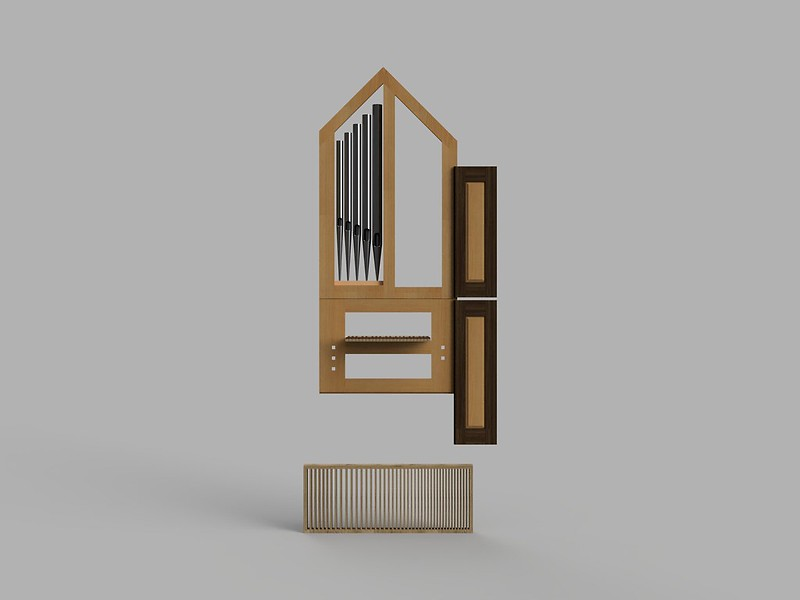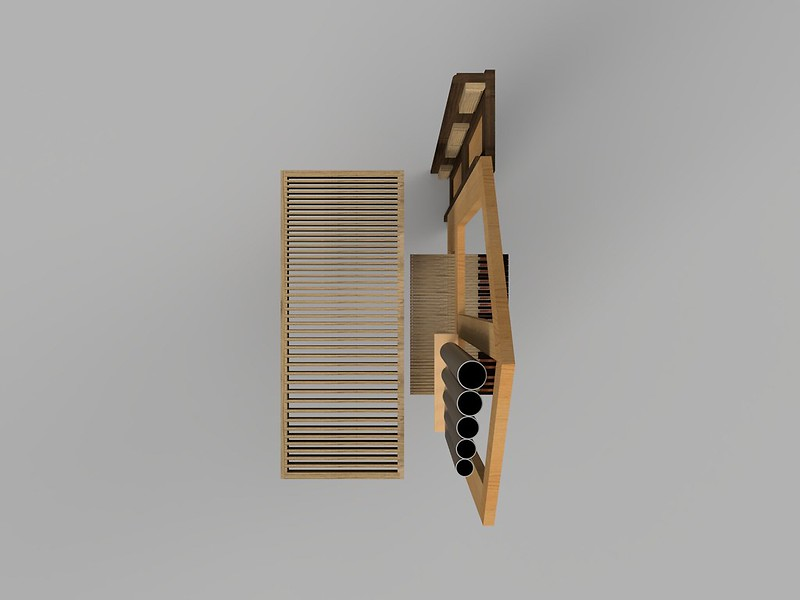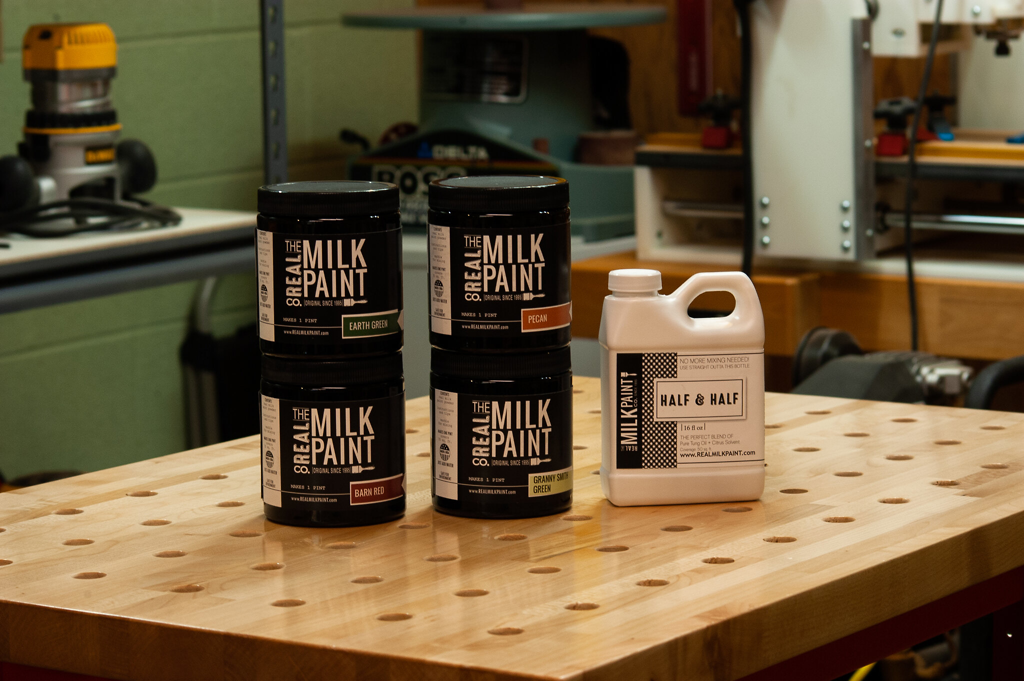The 43-Note Continuo Architecture is Different: Let Me Explain
![]() August 10, 2025 11:04
August 10, 2025 11:04
I wrote here about my plan, as a design study, to conceptually build a very real church, an organ it didn't ask for, building it from pipes taken from their existing gallery organ built in the mid-industrial era. This design study allows me the opportunity to build out, if only on paper, an example of my 43-note continuo for a space I know well, from material I know well. I was an organist there for eight years. To lay some foundation, I'll be writing about organ nerd-stuff in this post, so even if the organ isn't your thing, please stay with me here.
I developed a 43-note continuo organ architecture as a post-pandemic solution to the cost and sustainability issues associated with the pipe organ, issues that prompt many churches to conclude their instrument is no longer worth continued investment.
I chose 43 notes because I found that a keyboard compass starting at F06 and continuing to B48, with a break between bass and treble at tonal-f, gave almost everything I wanted from an organ built to accompany vocal and instrumental ensembles, yet not one expected by itself to lead the whole congregation in singing hymns, the usual case with traditional workship. Because the dimensions of organ pipes increase logarithmically as one descends the scale, removing the lowest five notes and their corresponding pipes provided the design with an efficient internal layout, avoiding the awkward placement of pipes and components within the case. By doing so, I designed a well-organized internal space to facilitate tuning and maintenance.
I computer-designed my 43-note continuo from the original computer drawings I used to build my previous opus list of cabinet organs and created a scaled-back, artistically rendered design, yet one that accommodates the use of recycled organ pipes with their larger dimensions. Recycled appropriately, pipes from the late nineteenth or early twentieth century retain value in their ability to contribute timbres from eras past. When properly combined with upperwork, they provide the foundation for a diverse yet blended tonal design.
I won't say anything more about the 43-note organ because I've said it best here. Again, don't hesitate to reach out with any questions or comments.
Posted August 10, 2025 11:04
Add Your Comment
Reuse and Recycle: The Story of a 43-Note Build
by Steve Panizza
Recent Blog Entries
Archive




